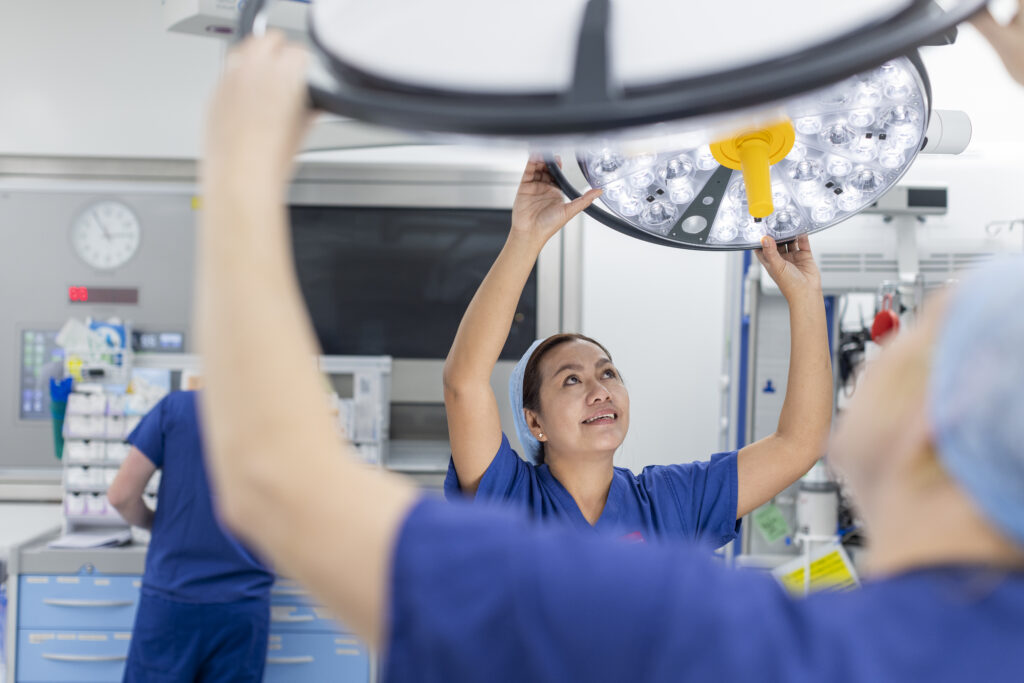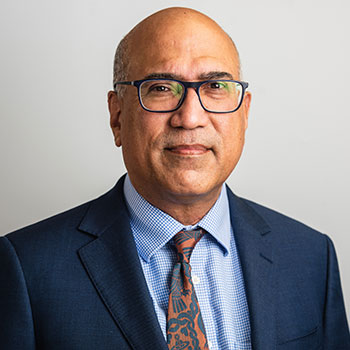What is gallbladder surgery?
Gallbladder removal surgery, also known as cholecystectomy, involves surgically removing the gallbladder, which collects and stores bile produced by the liver. The procedure addresses severe pain or complications arising from gallstones or inflammation. The surgery can be performed using various techniques, each tailored to the patient’s specific condition and medical history.
Laparoscopic surgery, a minimally invasive method, involves making several small incisions to remove the gallbladder, leading to quicker recovery and smaller scars compared to traditional open surgery.
When is gallbladder surgery needed?
The most common reason for gallbladder removal surgery is the presence of gallstones, which are small, hard deposits that form in the gallbladder. These stones can cause blockages and painful symptoms, such as biliary colic, characterised by intense pain in the upper right abdomen. If left untreated, gallstones can also irritate the gallbladder or pancreas, leading to more severe complications.
Gallstones can move into the bile duct, causing additional complications by blocking the flow of bile, which is crucial for digestion. Other conditions necessitating gallbladder removal include inflammation, infection, and tumours. Symptoms like persistent pain, nausea, and digestive issues often indicate the need for surgical intervention.
While medications can sometimes dissolve gallstones, surgery is typically the primary treatment for gallbladder problems. Removing the gallbladder eliminates the source of pain and prevents future complications, allowing patients to lead normal lives without significant long-term effects.
Hospital fee guide price: £4,830*
More about pricingBefore treatment
Initial consultation
During your consultation your surgeon will review your medical history, symptoms, and any previous imaging studies, such as an ultrasound or MRI, to confirm the diagnosis. They will explain the procedure and discuss potential risks and benefits. You may be advised to stop certain medications beforehand and given instructions on fasting before surgery. This is also your opportunity to ask any questions and address concerns about recovery, pain management, or lifestyle changes after the procedure.
Preparing for surgery
Preparation is key to a successful gallbladder removal surgery. This involves undergoing a thorough pre-surgery evaluation, making necessary dietary and lifestyle adjustments, and arranging post-surgery support. These measures will prepare you for surgery and facilitate a smooth recovery.
Pre-surgery evaluation
A comprehensive pre-surgery evaluation is essential to determine your fitness for gallbladder removal surgery. This assessment includes various tests such as blood tests, X-rays, and ECGs to evaluate your overall health and identify any potential risks. Being in good health prior to surgery can significantly lower the chances of complications during and after the procedure.
Discontinuing certain medications and supplements before surgery can reduce adverse effects. Managing underlying medical conditions through a preoperative assessment paves the way for a safe and successful surgery.
Dietary and lifestyle adjustments
In the weeks leading up to your surgery, making dietary and lifestyle adjustments can improve your overall health and optimize surgical outcomes. Limiting the intake of foods high in fat and sugar is advisable, as these can exacerbate gallbladder issues. Increasing fibre intake can aid in maintaining digestive health and regularity.
Regular exercise and staying well-hydrated contribute to overall health. Incorporating healthy fats into your diet while avoiding unhealthy fats can further aid in post-surgery recovery. Such adjustments ensure that your body is in the best possible shape for the procedure.
Arranging post-surgery support
It’s important to arrange for post-surgery support to help you through the initial recovery phase. Having a responsible adult to drive you home and assist with daily activities is crucial, especially given the effects of anaesthesia. If you are discharged the same day, you should have assistance available for at least the first 24 hours.
Having necessary support eases recovery, allowing you to focus on healing without daily chore worries. Good planning and support significantly enhance the post-surgery experience.
During treatment
Laparoscopic cholecystectomy, a common gallbladder keyhole surgery, involves making three or four small incisions in your abdomen. The surgeon uses a port device inserted near your belly button to inflate the abdomen with gas, creating space to operate. This keyhole procedure is less invasive than open surgery and typically takes about one to two hours to complete.
Laparoscopic gallbladder removal, performed under general anaesthesia, offers benefits like smaller scars, quicker recovery, and less post-operative pain compared to open surgery.
However, like any surgical procedure, it carries potential risks, such as bile leakage and infection.
After treatment
Immediate post-surgery care
Post-surgery care is crucial for a smooth recovery. Whether you’ve had a keyhole gallbladder removal surgery or an open procedure, understanding the immediate recovery steps can help you manage pain and prevent complications. This phase includes hospital recovery, managing pain, and proper wound care.
Managing pain and discomfort
Pain management is a critical part of post-surgery care. You can expect some pain at the incision sites, in the abdomen, and possibly in the shoulders due to the gas used during laparoscopic surgery. This shoulder pain typically subsides within 24 to 48 hours. Over-the-counter pain relievers like ibuprofen are often effective in managing this discomfort.
Regular activity and walking can alleviate pain and prevent complications like blood clots. Monitoring for signs of infection, like increasing pain, swelling, or redness, and contacting your doctor if these symptoms occur is important.
Wound care
Proper wound care prevents infections and ensures smooth healing. You will receive instructions on how to care for your wounds, including when to change dressings and how to shower safely. Most surgeries use dissolvable stitches, which typically disappear within one to two weeks.
If non-dissolvable stitches are used, they need to be removed by a nurse about 7 to 10 days post-surgery. Watching for signs of infection, such as increasing pain, swelling, redness, or pus discharge, is crucial, and any concerns should be promptly addressed by a healthcare professional.
Long-term recovery and living without a gallbladder
Living without a gallbladder is generally very manageable, and you can expect to return to your normal activities within a few weeks. The liver continues to produce bile, which drips directly into the digestive system, compensating for the absence of the gallbladder. While the gallbladder is not essential, its removal requires some adjustments to your diet and lifestyle.
Understanding the long-term recovery process and potential adjustments can help you lead a healthy life post-surgery. This section will cover diet, resuming normal activities, and potential long-term effects to ensure you’re well-prepared for the changes ahead.
Diet and nutrition
After gallbladder removal, bile travels directly from the liver to the intestines, which can temporarily affect digestion, especially for fatty foods. You may experience difficulty digesting fats and heavier meals for about a month post-surgery. Gradually introducing a balanced diet can help manage these digestive issues and prevent symptoms like bloating and diarrhoea.
High-fibre foods can alleviate postoperative bloating and flatulence. It’s advisable to avoid foods that trigger symptoms and focus on maintaining a generally healthy, balanced diet. You can eventually return to a normal diet and live healthily without a gallbladder.
Resuming normal activities
After laparoscopic gallbladder surgery, you can return to your normal activities within a week. The timeline for resuming work depends on the nature of your job, with light activities typically possible within 7 to 14 days.
Consult your surgeon for specific recommendations on resuming activities. With proper care, you can lead a perfectly normal life post-surgery.
Potential long-term effects
In most cases, gallbladder removal does not cause significant long-term health issues. However, you may experience prolonged digestive difficulties, such as persistent diarrhoea or bloating, for unclear reasons. These symptoms, often referred to as post-cholecystectomy syndrome, should prompt a consultation with a general practitioner to explore possible treatments.
Understanding these potential long-term effects and knowing when to seek medical advice can help you manage any ongoing symptoms effectively, ensuring a smooth transition to life without a gallbladder.
Complications and risks
Common complications of gallbladder surgery include infection, bile leakage, and hernias. Symptoms of infection, such as increasing pain and pus discharge, should be promptly addressed by a healthcare provider. Bile leakage might require drainage or further surgical intervention.
Bleeding is rare but may require another operation to manage it. Other possible complications include blood clots and heart problems, which are monitored and managed during post-surgery care.
Rare but serious risks include injury to the bile ducts or surrounding organs, such as the intestines. Damage to the bile duct can lead to bile leakage into the abdomen, requiring additional surgery.
Surgery also increases the risk of blood clots, which can lead to deep vein thrombosis. Serious risks from general anaesthesia, including allergic reactions and, in very rare cases, death, should also be considered.
Preventing complications begins with being fit and healthy before surgery. Wearing special compression stockings post-surgery can help prevent blood clots. It’s also important to follow all medical advice and attend follow-up appointments to monitor recovery and address any issues promptly.
Patients should communicate any concerns about potential complications with their surgeon to ensure a safe procedure and effective treatment. Proper care and vigilance can significantly reduce the risk of complications.
Appointment and Treatment Plan
Appointment
Based on your previous consultation with a doctor, an appointment will be arranged between you and your surgeon.
Treatment plan
During this appointment, you will review your medical history, discuss the details of the surgery and recovery process, and collaboratively decide if this procedure is a suitable option for you.
Pre-op assessment
If surgery is an option, then the surgeon and their team will thoroughly assess whether you’re right for the surgery. They’ll consider your current health, any previous issues, and other external matters.
Surgery
Prior to going through the surgery, our team will ensure that you’re prepped once again. If everything is confirmed, you’ll undergo the surgery and then we’ll explain the aftercare instructions.
Aftercare
If necessary, you’ll stay in a ward for a few hours to ensure that you’re ready to go home after the surgery. However, this may depend on the surgery outcome and whether you need moderate or light assistance.
Follow-Up
You’ll come in a few weeks later and we’ll give you one final check-over to ensure that you’re on track for recovery.
Experts
We are proud to provide patients with access to a wide range of clinicians, chosen specifically for their knowledge and reputation in their area of expertise. Our experts align with our values: putting you at the centre of your care and educating you on your options at each step of the journey. We encourage you to learn more about our clinicians and how they can help you below. As always, please contact our patient services team if you require any additional information.
We offer 3 ways to pay for your treatment
We exist to take the stress out of private healthcare.
Our payment options are designed to offer you easy access to our treatments and services. You can choose to pay on the day, spread the cost, or use your private medical insurance.
Our patient services team will guide you through the process, providing clear costs and support throughout your course of treatment so you can focus on the thing that matters most – your health.
Whether you pay in advance, spread the cost, or use your private medical insurance, rest assured you will be receiving exceptional care 365 days a year.
Pay in Advance
Even if you do not have medical insurance, you can still get quick and comprehensive access to private medical care.
We provide transparent pricing from your initial consultation to the completion of your treatment so you know where your stand, every step of the way.
We accept all major debit and credit cards, as well as Apple Pay for UK residents. Please note that we do not accept cash or cheques.
Pay monthly
Paying for your treatment at OSD Healthcare doesn’t need to mean settling the full cost in one go.
Many of our treatments have a pay monthly option that allows you to spread the cost of your treatment over 12 months with no credit checks required.
A minimum spend of £300 does apply. We’ll take your first payment upfront and then arrange a direct debit for your monthly payments thereafter. It’s that simple.
Pay using PMI
We are recognised by all major health insurance companies and with our extensive range of services, there are lots of benefits to using your insurance with us. Our patient services team is here to answer any questions you may have about using your private health insurance with us.
Please bring along your policy details including your scheme details, membership or policy number, expiry date and confirmation of eligibility to claim (i.e. your authorisation number). If you do not have these details with you, we will require payment from you on the day. Patients are liable for any amounts not settled by their insurer.
Pricing
Hospital fee guide price: £4,830
Procedure price subject to bespoke quotation.
Additional consultant fee not included.
FAQs
When the gallbladder is removed, bile flows directly from the liver to the intestines, allowing for normal digestion, particularly of fats. This procedure is often recommended due to issues such as gallstones that cause pain or inflammation.
Gallbladder removal surgery, known as cholecystectomy, entails the surgical extraction of the gallbladder, typically to address issues such as gallstones and blockages. This procedure is crucial for alleviating associated health problems.
Gallbladder surgery is necessary to address issues such as gallstones, which can result in blockages, significant pain, and serious complications. Timely surgical intervention can alleviate these health risks effectively.
To prepare for gallbladder surgery, prioritise pre-surgery evaluations, adhere to any dietary recommendations, and arrange for support during your recovery period. These steps will help ensure a smoother surgical experience and recovery.






